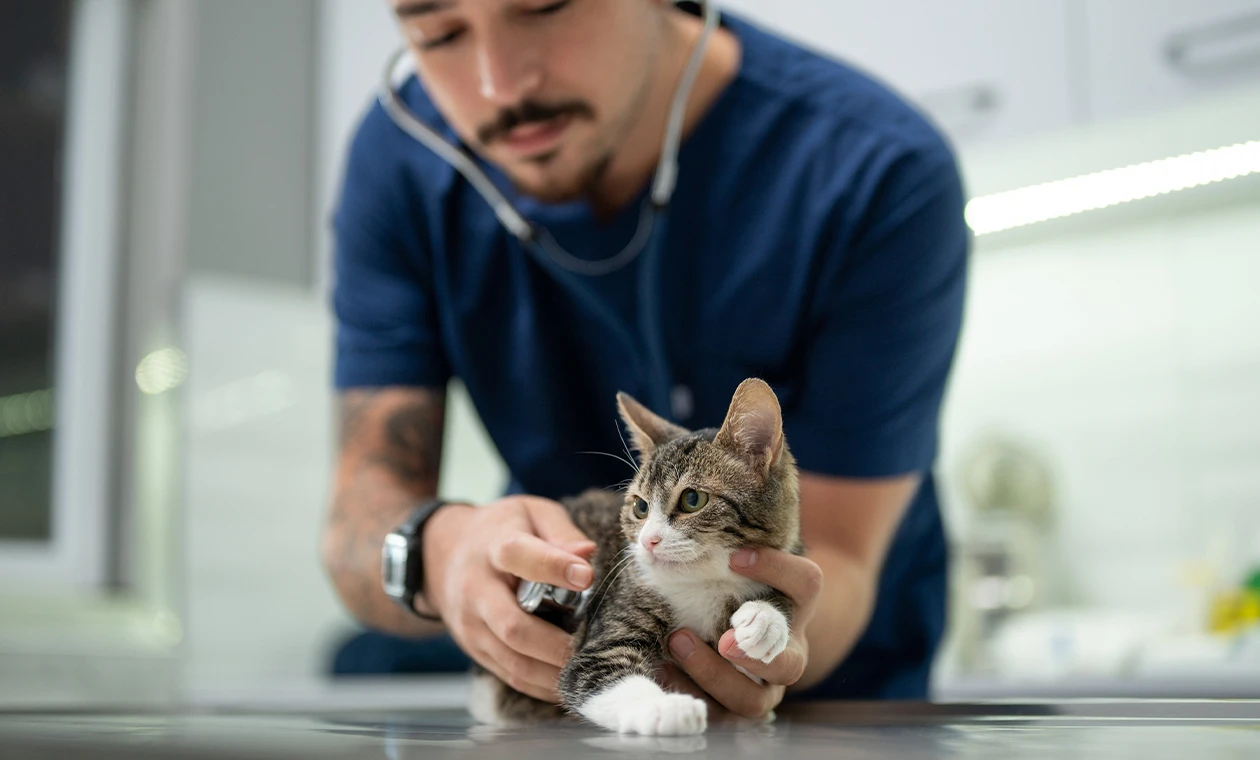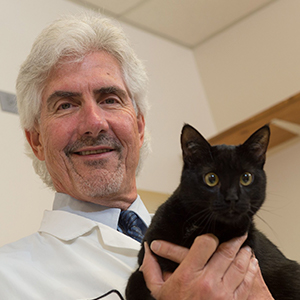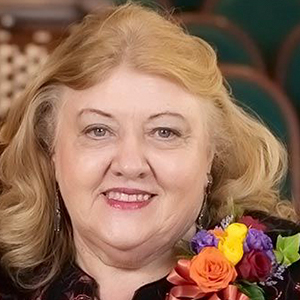Southern
Veterinary
Conference
Birmingham, AL
/
August 7-10
/
100+ CE Hours



With the limited availability of specialty and emergency clinics, practitioners are often seeing routine same day cases with a variety of more critical cases mixed in. This lecture will take practitioners through busy day in our ER talking about all the ways the walk-in service can bring many surprises.
In this lecture, Dr. Lappin with discuss current concepts in the management of radiodense bladder stones and feline interstitial cystitis. Emphasis will be placed on dietary management. Ways to management stress in cats without the use of drugs will also be covered.
Feline URI continues to be a major problem for cats around the world. In this lecture, Dr. Lappin with discuss the ISCAID antibiotic guidelines for use with bacterial causes and discuss how best to keep the chronic viral causes in remission, including the use of immune modulating probiotics.
In this lecture, Dr. Lappin will review the data supporting use of probiotics in the management of diarrhea in dogs and cats. Emphasis will be placed on use of products with excellent quality control and published papers.

This lecture takes practitioners through a logical workup for all trauma patients. I stress evaluation of the Airway, Breathing, Cardiovascular system, and neurologic trauma. I give case examples for upper airway trauma, penetrating chest wounds, pulmonary contusions, broken backs, head trauma, myocardial contusions, and urinary bladder rupture. I have video clips for each case.
Recognizing the importance of the veterinary technician in postoperative nursing of the critical patient, this lecture uses several cases (Gastric dilatation volvulus, and pelvic fracture patient) to discuss the monitoring devoted to these patients. We stress monitoring and optimizing the following: Respiratory function, fluid balance, cardiac function, renal function, neurologic function, gastrointestinal function, clotting/bleeding, blood pressure, patient comfort, sedation and pain control.
Using case examples and video, I discuss the management of renal failure stressing closed collection catheterization, monitoring, and fluid planning. I use an example of ethylene glycol poisoning to introduce peritoneal dialysis. I also discuss managing urinary tract obstructions in dogs and cats, pyometra, prostatic abscess, and dystocia.

This presentation is intended to describe how to recognize the ECG characteristics and clinical signs associated with pathologic bradyarrhythmias. At the conclusion of this session, audience members will have a thorough understanding of the diagnostic and therapeutic approach to cases of bradyarrhythmias. Additionally, case-related information including images and videos will be utilized throughout the presentation.
This presentation is intended to describe how to recognize the ECG characteristics and clinical signs associated with pathologic tachyarrhythmias. At the conclusion of this session, audience members will have a thorough understanding of the diagnostic and therapeutic approach to cases of tachyarrhythmias. Additionally, case-related information including images and videos will be utilized throughout the presentation.
This presentation is intended to describe new interventional procedures that can be offered for dogs with acquired and congenital cardiac diseases. At the conclusion of this session, audience members will have an understanding of the impact these procedures may have on a patient’s physiology. Additionally, case-related information including images and videos will be utilized throughout the presentation.

Allergies in cats are one of the most challenging and frustrating medical conditions we deal with as veterinarians. This largely is due to the severity of dermatological lesions, significantly decreased quality of life, limited medical therapy options, and difficultly administering medications to cats. Cats tend to develop significant psychogenic components to pruritic behaviors that need to be addressed to maintain adequate control of the clinical signs. This lecture will cover the common allergic reaction patterns in cats and how to differentiate allergy types in cats so that effective treatment plans can be implemented.
Hot spots and acral lick dermatoses occur commonly and are highly frustrating for pet owners and veterinarians. Hot spots, AKA acute moist dermatitis or pyotraumatic dermatitis, is an acute onset of well-demarcated exudative dermatitis characterized by severe excoriation, alopecia, erythema, intense pruritus, +/- pain, exudate, and excoriation. Acral lick dermatitis, AKA lick granuloma and acral pruritic nodule, is a more chronic lesion characterized by lichenified (thickened), firm, raised, alopecic (hairless) plaque located on the distal extremity caused by excessive licking. There are many causes of these lesions, and most are allergic in origin. These primary causes must be diagnosed and treated in order to achieve complete resolution of these clinical lesions. Perianal dermatitis describes inflammation of the tissue surrounding the anus. There are numerous causes of perianal dermatitis including allergic skin disease, gastrointestinal parasites, anal sacculitis, vulvar intertrigo, perianal fistulae, and neoplasia. Clinical signs consistent with perianal dermatitis include behaviors of discomfort such as licking, chewing, and scooting, and dermatological lesions such as foul odor, erythema, exudate, lichenification, alopecia, crusting, and draining tracts. Identifying the primary disease process is important when developing a long-term care plan.
Pet owners are looking for that easy, quick fix when it comes to controlling their pet’s allergies. But did you know that topical therapy is the hidden key to providing immediate relief and achieving better long-term control over skin.
Otitis is the inflammation and/or infection of the ear. Otitis is further characterized by the extent of disease present, and is generally categorized as pinnal dermatitis, otitis externa, otitis media, and otitis interna. Distinguishing between these types requires a working knowledge of basic ear anatomy. Pinnal dermatitis refers to inflammation/infection of the concave or convex aspects of the pinna (ear flap). Otitis externa refers to disease affecting the external ear canal which begins at the tympanic membrane (ear drum) and extends out the horizontal and vertical canals to the opening of the ear canal. Otitis media refers to disease affecting the middle ear compartment, or tympanic bulla. Otitis interna refers to disease affecting the inner ear which includes the cochlea and semicircular canals. Understanding which part(s) of the ear is affected is important when implementing treatment plans that will be effective.

At the end of this presentation, participants/attendees should be able to:
Learning Objectives:
At the end of this presentation, participants/attendees should be able to:
At the end of this presentation, participants/attendees should be able to:


Common ophthalmic surgery techniques will be discussed. Clinical cases will be presented to demonstrate tips for successful outcomes and how to handle complications.
The diagnosis and treatment of age related eye diseases in dogs will be presented. Normal age related changes will be also be discussed.

Thoracic radiographic studies are likely the most common site imaged in veterinary medicine. The radiographic appearance of lung disease can be challenging in our feline patients. A discussion and overview of the lung patterns with case examples will be presented. Computed tomography is more sensitive for the detection of pulmonary disease so a few case examples will be incorporated into this presentation.
Radiographic interpretation of cardiovascular disease in cats, in and out of heart failure will be reviewed. Thoracic radiographic clues of systemic hypertension will be included. Echocardiographic scanning tips will be provided to improve your ability to get a diagnostic scan. The pros and cons of a focused cardiac ultrasound vs a complete echocardiogram will be discussed. The goal is to make you feel more comfortable interpreting radiographic and echocardiographic findings in cats suspected of underlying cardiac disease.


Anesthesia for pediatric patients will discuss the unique concerns for these patients in the cardiovascular and respiratory systems and their ability to metabolize drugs. We will discuss the potential adverse effects of hypothermia, hypoglycemia and hypotension. This discussion will include case examples. Anesthesia for geriatric patients will discuss the age-related changes that can affect anesthesia and how this may affect our protocol. This discussion will include case examples.
Anesthesia for pediatric patients will discuss the unique concerns for these patients in the cardiovascular and respiratory systems and their ability to metabolize drugs. We will discuss the potential adverse effects of hypothermia, hypoglycemia and hypotension. This discussion will include case examples. Anesthesia for geriatric patients will discuss the age-related changes that can affect anesthesia and how this may affect our protocol. This discussion will include case examples.
Breed specific anesthesia protocols will discuss the particular anesthesia concerns certain breeds of dogs and cats may have as related to respiratory, cardiovascular and metabolic conditions.

Description coming soon…

This lecture covers tips for performing a good orthopedic exam on cats. It also discusses the most common orthopedic injuries seen in cats. The lecture includes the medical management of osteoarthritis and a discussion of sedation for performing the exam when needed. Practitioners will learn tips for performing a comprehensive orthopedic exam in cats, develop rule-out lists for exam findings, learn about various feline orthopedic conditions, and differentiate orthopedic and neurological findings in cats.
This session discusses the diagnosis and non-surgical management of feline osteoarthritis. Multimodal management and other treatment options will be discussed. Surgical management is only briefly discussed. This session is for all small animal practitioners who see arthritic cats in their practice. Practitioners will learn about the differences between the presentation of arthritis in dogs and cats, the principles of pain management for arthritic cats, and multimodal management.
This lecture discusses the principles of PT and rehab for feline patients. This includes a discussion of the special challenges presented when working with cats requiring physical therapy. Exercises and follow-up guidelines are included for patients following common orthopedic injuries and surgeries. Practitioners will learn in-hospital rehab techniques and principles for more formal rehab. They will also learn about conditions requiring formal rehab vs. those that can be done as outpatients in primary care practices.


The evolution of laser therapy to mainstream patient care in veterinary medicine is a fascinating journey that started with the obscure observation that clipped hair grew back more quickly in mice irradiated with laser light. Now, 50 years later, we use laser therapy every day to reduce pain, modulate inflammation, and accelerate healing. Attendees will see how we got from “hair to here” and how laser therapy significantly improves patient care today.
Achieving predictable and reproducible results with laser therapy is an easily mastered skill, dependent on proper dosing, preparation, application, and case management. This session is a practical look at the planning and execution of effective patient treatment with this non-invasive and non-pharmacological technology.
Explore the limitless potential of laser therapy as a versatile treatment modality across a wide spectrum of conditions. This session demonstrates how to integrate laser therapy into treatment protocols for both common and less conventional conditions.
New technology is best appreciated during an up-close, personal, and hands on opportunity. In this fast-paced, case-based, interactive hands-on session, attendees will experience how a therapeutic laser is used to treat patients.
This introductory lecture will review why the CO2 laser has become widely used in general practices as a surgical multitool used in a diversity of soft tissue surgeries. Learn how recent innovations in CO2 laser surgical equipment and technique expand our surgical capabilities and enhance patient response.
Understanding the pathogenesis of brachycephalic obstructive airway syndrome (BOAS), along with appreciation for the multiple morbidities that accompany genetic selection for brachycephaly, helps us understand why we are seeing a BOAS epidemic. Learn how advancement of CO2 laser surgery techniques and earlier surgical intervention by an increasing number of primary care practitioners have resulted in more accessible and improved management of BOAS patients.
With the limited availability of specialty and emergency clinics, practitioners are often seeing routine same day cases with a variety of more critical cases mixed in. This lecture will take practitioners through busy day in our ER talking about all the ways the walk-in service can bring many surprises.

With the number of social media and online review platforms ever-growing, it’s hard to keep up with it all—let alone know if your practice even needs to. We’ll review the platforms out there, their pros and cons, and what it takes to keep them up. Learn workflows and hacks to determine what’s right for your team and clientele.
Artificial intelligence (AI) and tools like ChatGPT are transforming the way many small businesses and marketers alike approach marketing. In this lecture, we will explore the pros and cons of using AI in vet med marketing and practical ways that veterinary clinics can leverage AI and tools like ChatGPT to create more personalized and efficient marketing campaigns.
Running a veterinary practice (or any small business) is HARD. But there are tools out there to make your business run more efficiently and effectively– many of them from outside the veterinary industry. From team communication to SOP creation to digital forms to marketing and more, there truly is “an app for that.” Dive into an overview on tried-and-true-in-a-practice techy tools that just might help you save some time, while learning tips on how to choose, how to implement, and how to NOT get overwhelmed by new technology.
This lecture delves into the nuances of managing both in-house and online pharmacies, and offers practical strategies for effective marketing through social media, website, and email to ensure pet owners find convenience, pets find compliance, and veterinary teams find efficiency (and revenue). We’ll cover the latest data in customer preferences, techy solutions like QR codes and Jotforms to streamline refill processes and new ideas to enhance client engagement and action.
Effective communication is essential for veterinary practices to maintain a healthy client base and ensure pets receive optimal care. One of the most valuable communication tools in a practice’s arsenal is the reminder system. In this lecture, we will explore the marketing potential of reminders and how they can be leveraged to facilitate preferred client behaviors. By optimizing reminders, practices can set expectations ahead of time, educate clients about necessary services, and streamline online booking and refill requests, saving time and energy for the team. Discover the potential of reminders as a marketing tool and how to use them to enhance client engagement and loyalty.
Online reviews are a dreaded topic among many veterinary professionals, but yet are widely expected and trusted by our clientele. Learn strategies to know if and when to respond, to proactively build your library of five star reviews, to use existing reviews to convert more clients, and finally, concrete examples on best practices and resources for dealing with negative reviews and positive reviews alike.
With more social media channels and often less staff and time, it can be hard to know what to post and where to keep your practice’s social media and online presence healthy and effective. Make sure the posts you’re making are worth your time and energy and help facilitate your practice’s goals– whether that’s client education, differentiation from the competition, driving business or client behaviors.

With the limited availability of specialty and emergency clinics, practitioners are often seeing routine same day cases with a variety of more critical cases mixed in. This lecture will take practitioners through busy day in our ER talking about all the ways the walk-in service can bring many surprises.
Veterinary Rules and regulations will be discussed for increased compliance which covers the legal requirements for the Florida CE.
Drug dispensation and safe handling of drugs will be discussed to include topics of how to deal with the opioid crisis in veterinary medicine. This class is approved for the Opioid CE requirements.
Non- controlled sedatives, hazardous drug handling and compounding regulations will also be covered for all veterinary staff handling any medications.
References and available resources for veterinarians will be included in the audience discussion.
Veterinary Rules and regulations will be discussed for increased compliance which covers the legal requirements for the Florida CE.
Drug dispensation and safe handling of drugs will be discussed to include topics of how to deal with the opioid crisis in veterinary medicine. This class is approved for the Opioid CE requirements.
Non- controlled sedatives, hazardous drug handling and compounding regulations will also be covered for all veterinary staff handling any medications.
References and available resources for veterinarians will be included in the audience discussion.